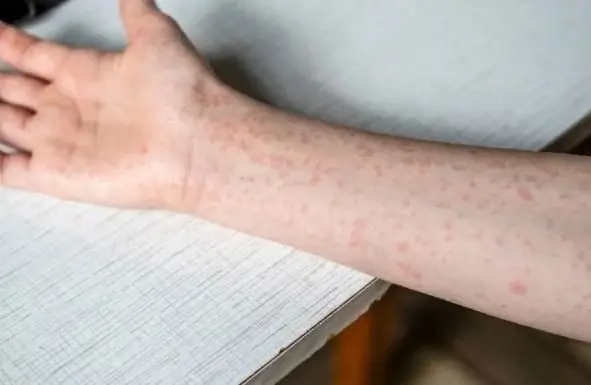Three members of a family originally from Jonacatepec were diagnosed with measles after residing in Michoacán from January to October. Michoacán currently has active cases of the disease.
Health authorities clarified that these are imported cases and that there is no community transmission or local spread in Morelos.
The affected individuals—between 1 and 26 years old—were identified promptly upon their return to the state. They received immediate medical attention and remain under surveillance and in home isolation, with a stable clinical course and without requiring hospitalization.
In a press release, Morelos Health Services (SSM) reported that, following the detection of the cases, a sanitary cordon was established in the municipality of Jantetelco, where the patients are currently located. The agency explained that the objective is to prevent the spread of the virus and reinforce epidemiological control measures in the region.
As part of the response protocol, the State Rapid Response Team (ERRA) was activated, comprised of personnel from Health Jurisdiction III of Cuautla and from the areas of Epidemiological Surveillance, Vaccination, the State Public Health Laboratory, Health Promotion, Risk Communication, and Medical Care, in coordination with the National Public Health Service.
The case study determined that the affected individuals had no history of vaccination and identified three contacts with compatible symptoms, who remain under active epidemiological surveillance awaiting laboratory results.
The sanitary cordon includes the active search for possible cases, contact tracing, review of immunization schedules, administration of the vaccine to susceptible populations, and informational activities to strengthen prevention.
The State Health Secretariat, headed by Mario Ocampo Ocampo, urged mothers, fathers, and guardians to review the National Health Card for children and adolescents and complete the MMR (measles, mumps, rubella) vaccination schedule.
Measles is a highly contagious viral disease, although preventable through vaccination. Its symptoms include fever, cough, runny nose, red eyes, and skin rash. If these symptoms appear, it is recommended to visit the nearest medical unit.
Health authorities reiterated their commitment to maintaining preventive measures and ongoing surveillance to protect the health of the population.

Source: proceso




